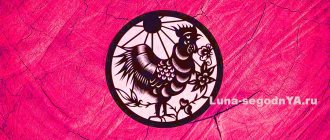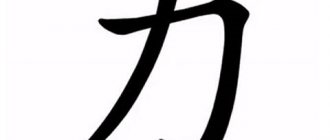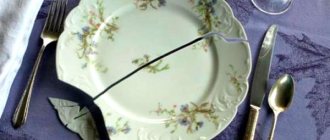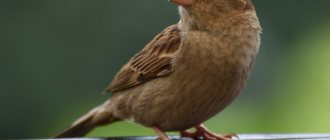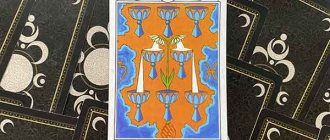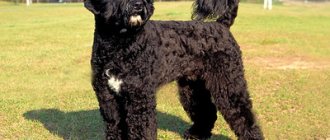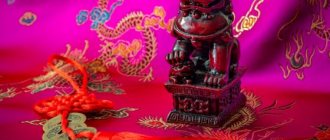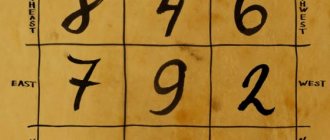According to Feng Shui, the rooster plays several roles: it embodies the masculine principle, serves as an activator of success and wealth, and puts a barrier to negative energy. A correctly selected and positioned image of a bird normalizes the vital flows of Qi, so the owner of such a figurine will restore strength and attract success and money capital.
The rooster, a symbol of the Yang element, represents active masculine energy and is endowed with many virtues. This ambitious sign will help you achieve a lot in the social and financial sphere, protect you from troubles and ill-wishers, and protect you from betrayal and betrayal.
The meaning of the rooster in the teachings of Feng Shui
According to Chinese beliefs, the rooster is the bird of the sun and heavenly fire, a conductor of solar energy. The bird embodies 5 virtues: courage, reliability, protection of the weak, dignity in war and nobility in peacetime. In Chinese, the words "rooster" and "luck" sound the same.
A rooster can help in various life endeavors: according to Feng Shui, the meaning of this symbol is multifaceted. The courage and strength of the bird will push you to conquer career heights and increase your income, and will become a magnet for good luck and fame. The image of a bird will help keep your other half faithful. The patronage of the sign will protect against physical harm (theft, fire) and moral damage (evil eye, slander, ill will).
The Rooster will help you gain luck, wealth, career growth; the embodiment of masculinity and active yang energy will put a barrier to negativity from the outside, protective properties will be able to protect the house from intruders.
LiveInternetLiveInternet
rooster lat. gallus French chante-clair - lit. “singing dawn” One of the most ancient emblems.
The basis of the mythological image of this bird in most (excluding Northern, Celtic and Scandinavian) traditions is its connection with the sun, like which the rooster “counts down” time, announcing the beginning of the day. But in general, the functions of the gods to whom the rooster is dedicated (Apollo, Mithras, Ahuramazda, Amaterasu, Hermes, Asclepius, Ares, etc.) are significantly broader. Being associated with the deities of dawn and the sun, the rooster often acts as a herald (messenger) of the sun (light) and its guide in the daily and annual cycles. But the rooster is not only connected with the sun, similar to it: he himself is an earthly image, a zoomorphic transformation of heavenly fire. Some data allow us to correlate the sacrifice of a rooster (in those ritual traditions where there is no prohibition on this, it is the rooster that is primarily used for this purpose) with its solar, fiery nature. In many cases, there is a clearly visible connection between the sacrifice of a rooster and the making of fire, its ignition.
According to popular belief, night ghosts disappear with the first crow of a rooster. This solar protective symbolism inherent in the rooster can be traced back to ancient times and was widespread in the Middle East. The motif of a rooster, dispersing evil spirits with its cry and scaring away the dead, forms the climax in a special type of fairy tales and is constant in fairy tales.
Like the sun, the rooster is vigilant and all-seeing; The image of a guardian rooster was placed on the roofs of houses, poles, spiers, weather vanes, as well as on caskets, chests, and reliquaries.
Like the sun, the rooster is also associated with the underworld. The rooster is also associated with the symbolism of the resurrection from the dead and the eternal rebirth of life. In this context, it is possible to explain the image of a rooster, sometimes placed on graves, on a cross, stone, etc., often alternating with the image of the sun.
There are widespread ideas about the dual nature of the bird. The theme of the rooster also arises in connection with the image of the firebird (with dragon features) Rarog (Rarashek), a basilisk that is born from an egg laid by a black hen (or a black seven-year old rooster).
The rooster's involvement in both the kingdom of life, light, and the kingdom of death, darkness makes this image capable of modeling the entire complex of life - death - rebirth. This is also facilitated by mythopoetic ideas about the rooster as twice-born, which, in particular, is often emphasized in riddles about it. The idea of the dual nature, or at least the paradoxical nature of the rooster, is also reflected in other riddles.
Associated with life and death, the rooster symbolizes fertility primarily in its productive aspect. The rooster is one of the key symbols of sexual potency. Indicative in this regard are the “cock” designations of the reproductive organ (for example, the English slang “cock”) in relation to the “chicken” designations of the female genital organ, as well as the idea of the rooster as a symbol of lust, which exists in a number of traditions. The Vatican collection contains a Roman “phallic totem” - a bronze image of a rooster with a male torso and the head of a penis instead of a head, on the pedestal there is the inscription “Savior of the World.” One of the manifestations of the vitality of the rooster is its exceptional belligerence, which is reflected in folklore, symbolism and emblems. His passion for fighting for his territory and his constant readiness to mate deservedly make him a vivid symbol of masculinity.
The correlation between the qualities of a rooster and a person receives a certain reinforcement in the fairly common motif of the werewolf of the rooster.
The contrast of roosters by color is functionally significant:
- a light, red rooster is associated with the sun, fire;
- black - with water, the underground kingdom (cf. the ritual burying of a rooster in the ground).
Basic values:
- Sun, solar deities, dawn;
- male principle, activity, awakening;
- glory, excellence ;
- courage, bravery, courage;
- caution, vigilance, vigilance, reliability;
- foresight;
- (spiritual) rebirth;
- struggle, war, battle, battle, call to battle;
- pride, arrogance;
- lust;
- fire - red
- God's judgment;
- evil, witchcraft, devil, death - black rooster.
In the New Testament, the image of a rooster has a symbolic meaning of a certain decisive facet. St. Gregory turned the rooster into an allegory of the good shepherd, since he “beats his wings with his wings (repents) before he lifts up his voice.”
In the subsequent Christian tradition, the symbolism of the rooster is predominantly positive:
- Christ as the sun of faith, ushering in a new day and putting to flight the forces of darkness and evil;
- light (faith, truth, etc.);
- the personification of the true preacher of the Gospel, telling about the coming of the Dawn of Christ;
- readiness to meet the dawn, awakening to life in Christ;
- wakefulness and vigilance towards evil, confrontation with the darkness of spiritual ignorance;
- Christians fighting for Christ - cockfighting;
- rebirth - in the scenes of the Passion;
- Passion of the Lord;
- human weakness and repentance - in the scenes with the Apostle Peter.
Weather vanes in the shape of a (gilded) rooster, “which were almost always placed on the spire of a high tower, bell tower or town hall”:
- welcome the rising of the Sun-Christ;
- indicate where the forces of evil threaten from;
- guard the bell towers in the hours of darkness, when the bells are silent.
Davi notes that “vigilance in this context should be interpreted in the sense of striving for the imperishable and caring for the primacy of the spiritual: to be awakened and greet the Sun - Christ - even before his appearance in the east - which serves as a living image of enlightenment.”
The rooster is endowed with liberality, as he allows his laying hens to share food with him.
The rooster is often depicted in opposition to the lion.
Most often, the “reminder rooster” is depicted in connection with the gospel motif of Peter’s denial, scenes of which were liked to be depicted on early Christian sarcophagi.
When Peter openly confesses his devotion to Jesus, Jesus answers him: “... truly, truly, I say to you, the rooster will not crow until you have denied Me three times .
In an alternative interpretation, the rooster is a messenger of the devil who tempted Peter. In this plot, the rooster serves as a symbol of renunciation, subsequent repentance, a warning against arrogance, etc. In addition, the rooster serves as a sign of Peter’s preaching, papal activity.
The role of the rooster as a natural clock and its connection with St. Peter contributed to the latter becoming the patron saint of watchmakers. The figure of a rooster often decorates watches. The clock of Strasbourg Cathedral is surmounted by the figure of a rooster, which crows every time the figure of St. Peter appears among the apostles.
In the Middle Ages in the West, a negative aspect emerged in the symbolism of the rooster, which is the embodiment of lust and pugnacity, characteristic of young people possessed by “rooster demons.”
Attribute:
- St. Apostle Peter is an allusion to his renunciation and repentance.
- St. Vitus - sitting on a book.
There was also a belief that the crow of a rooster in the morning would cause one of the four basilisk demons of hell to panic. In the Middle Ages, experienced travelers, before venturing into unknown regions, wisely stocked up on either a caged rooster or ermine.
Recommendations for choosing a suitable mascot
The rooster figurine is an artistically executed copy of a bird with the distinctive features of its species: a proud, confident appearance, elegant plumage and tail, and a fleshy comb.
It is better to choose a figurine made from natural materials. A correctly selected figurine will help reveal the incarnation of the rooster that will attract the necessary energy to achieve goals.
We have selected interesting articles for you:
The most powerful runes to attract unconditional love
20.03.2019
The meaning of the Valkyrie amulet - an ancient symbol of warriors
20.03.2019
A metal talisman will attract wealth. A metal souvenir will attract cash, help develop leadership skills and entrepreneurship, and become a patron of business. The energy of money will intensify in combination with other attributes of abundance: a rooster sitting on a handful of coins will additionally replenish the budget.
A figurine made of ceramic, porcelain or crystal enhances the protective properties of the symbols. This option will protect you from negative influences from the outside: it will protect your home from people with bad intentions, it will ward off homewreckers in the family and prevent betrayal, and at work it will protect you from competitors in business and slander from colleagues.
A wooden symbol of a bird will create a positive atmosphere in the house, bring comfort, tranquility and peace. The owner of a wooden talisman will also feel a beneficial effect on the body and psyche. The Rooster will help you restore strength, cleanse yourself of negative energy, and find harmony.
How to use?
Clear and sunny weather is a reason to take the figurine out onto the balcony to remove accumulated negativity.
Like any symbol from the east, the rooster demands honor and respect. The rooster should not be stored in a dusty or dirty place, for example, in a box, closet or attic. The bird requires constant attention and care. Every time you clean the rooster, you need to wipe it until it shines. It is recommended to periodically expose the bird to the sun. On a fine day, the figurine can be left on the balcony or on a windowsill flooded with sunlight for several hours. Thus, the figurine is cleansed of negativity and charged with positive energy.
Material for production
The optimal materials for manufacturing are metal, namely bronze, copper. Such figurines will become a symbol of good luck. Suitable for insurers, industrial workers, designers and realtors. The figurine will allow a person to maintain composure and endurance at the right time, develop the qualities of an entrepreneur, and gain popularity. Practitioners clarify that metal roosters protect against betrayal. To protect your family from external negativity, it is recommended to purchase a symbol made of porcelain, ceramics or crystal. This figurine will protect you from thieves.
Where to put a rooster figurine
An artistic depiction of a rooster can not only complement the decor of your home, but also, if placed correctly, attract well-being and activate positive energy.
According to Feng Shui, the South is the zone of Glory. If the rooster is located in the southern part of the room, the owner of the figurine can count on achieving fame and honor, acquiring a good reputation and public recognition, and increasing social status. It is better to choose a red bird figurine: this will enhance the effect of the talisman in achieving ambitious goals.
The southeastern housing sector is responsible for achieving wealth and capital accumulation. Placing a symbol in this part of the house will help realize desires related to money. To increase the possibilities of the winged patron in the financial sector, choose a metal figurine.
The rooster is a strong talisman. The qualities of a defender will be most fully revealed if you place the figurine at the entrance to the house. A Feng Shui assistant located there will protect you from people with hostile intentions, fire, the evil eye and other adverse influences from the outside.
Security features are also used to prevent third parties from interfering with your personal life and business. A figurine on your desktop will protect you from the envy of your colleagues and the intrigues of your competitors. A figurine standing at home in a closet or chest of drawers will prevent possible betrayal and preserve the devotion of the spouses. To enhance the protective properties, the bird figurine can be placed on both sides of the cabinet door.
You should not place the figurine next to a phoenix or dragon: the conflict of energies will neutralize the beneficial effects of these symbols.
Is the amulet suitable as a gift?
A Feng Shui figurine as a gift is not only a material offering, but also a wish for appropriate qualities to the recipient. A talisman in the form of a rooster symbolizes the accumulation of wealth, protection from ill-wishers, and strong masculine energy. Choosing this figurine will allow you to figuratively express your wishes for money and prosperity.
A gifted figurine of a bird carries several meanings: it is an interior detail that will decorate the house, an activator of positive energy that brings protection and wealth to the owner, and a material embodiment of good wishes.
